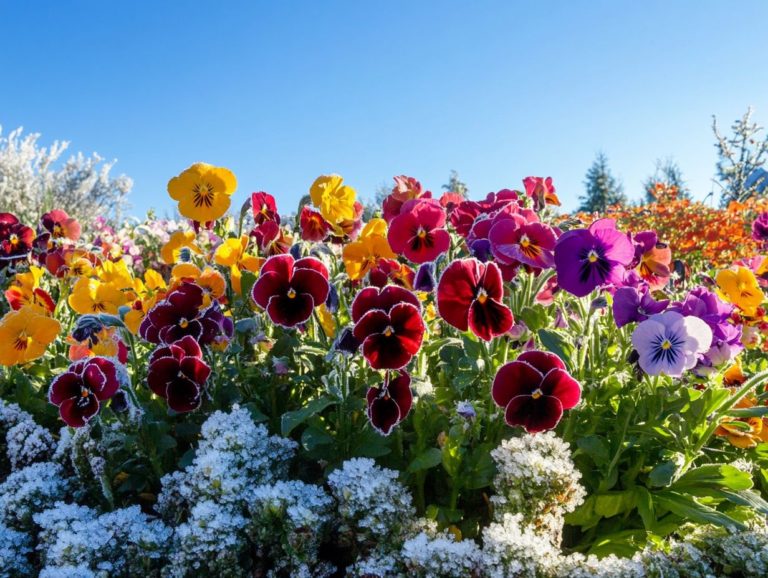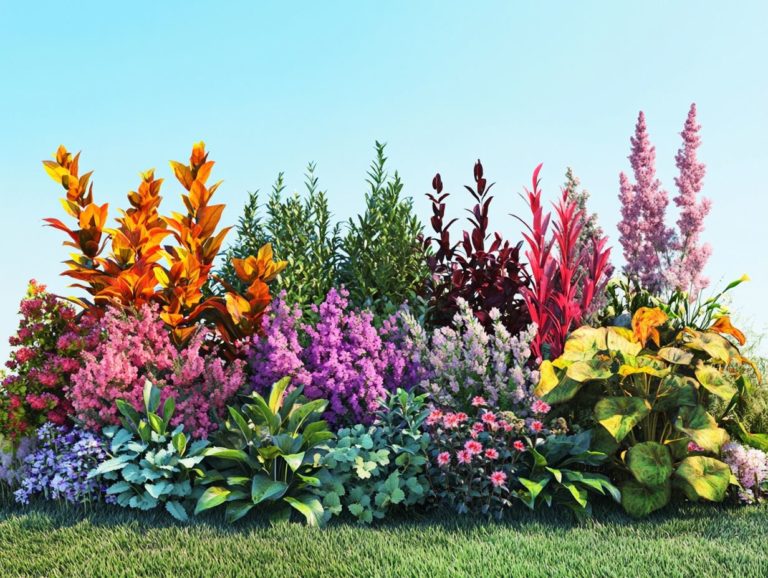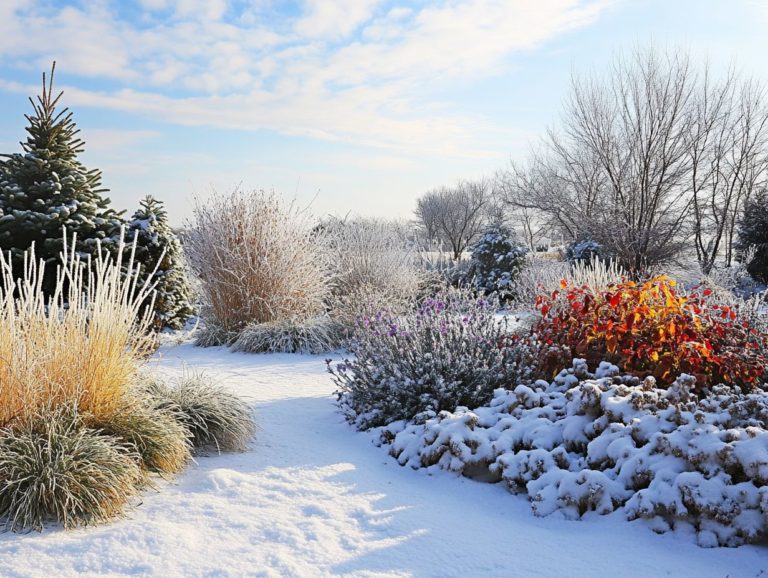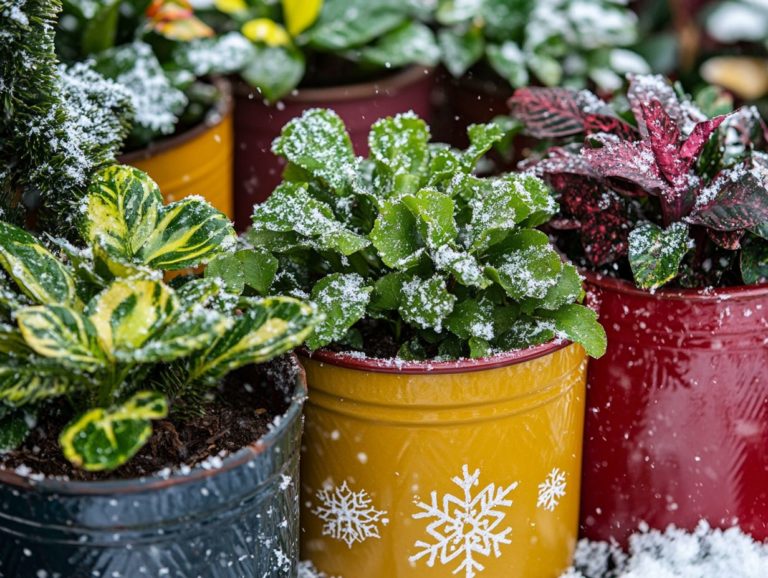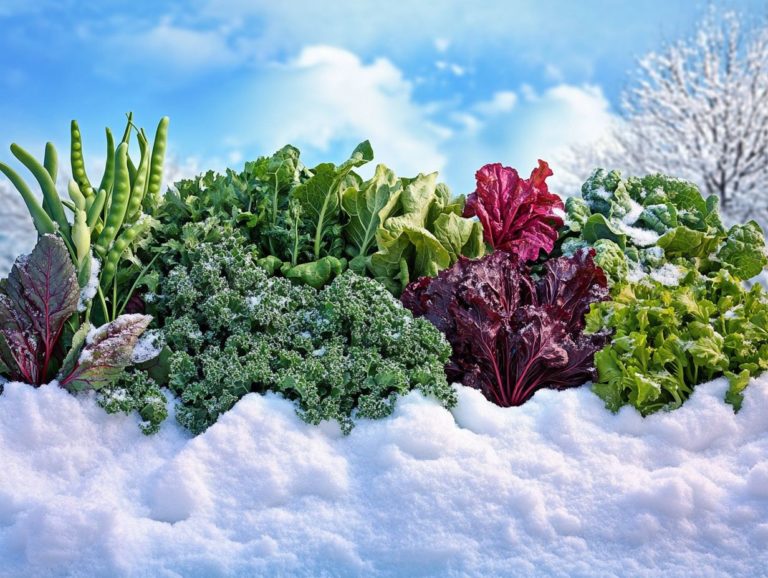Understanding Microclimates for Plant Selection
Microclimates are intriguing pockets of distinct environmental conditions that can profoundly impact plant growth.
Explore the fascinating concept of microclimates, learn how to identify them, and uncover the various factors such as the shape and features of the land, elevation, and local climate that shape these localized climates.
Discover how different plants thrive within specific microclimates and receive expert tips on selecting the right plants for your garden.
You’ll also explore methods to create and manipulate microclimates, ensuring your plants, including drought-tolerant varieties, flourish in their ideal surroundings.
Don’t miss out transform your gardening experience and watch your plants thrive!
Contents
Key Takeaways:

- Microclimates are small, localized areas with unique weather and climate conditions that can greatly impact plant growth and survival.
- Topography, elevation, and other factors such as nearby buildings or bodies of water can influence the formation and characteristics of microclimates.
- Understanding microclimates is crucial for selecting the right plants for optimal growth. Consider sun exposure, moisture levels, and temperature variations when choosing plants for specific microclimates.
What are Microclimates?
Microclimates are fascinating localized variations in climate that can dramatically influence the growing conditions for plants within a broader area, such as your garden. These subtle differences arise from factors like topography, surrounding vegetation, and even man-made structures.
In places like California, with its Mediterranean climate, understanding microclimates is crucial for enhancing your landscape gardening and making informed plant selections. Attention to these specifics becomes particularly important when you’re considering the distinct water requirements and soil moisture needs of various plants.
Defining and Identifying Microclimates
Defining microclimates involves recognizing the unique environmental patterns and immediate site conditions that distinguish a specific area within a broader climate zone.
To effectively identify these microclimates in your garden, start by observing temperature variations throughout the day. Pay close attention to spots that bask in sunlight versus those shaded by structures or trees.
Gauging moisture levels in different sections will provide valuable insights into water retention, highlighting areas that may be drier or consistently damp.
Analyzing plant growth is also important; certain species thrive in specific conditions while others may struggle.
Understanding these microclimates for winter gardening is essential, as they profoundly influence plant survival and the selection process for crafting an optimal growing environment.
Factors that Influence Microclimates
Several factors influence microclimates, including topography, elevation, and surrounding vegetation, all of which contribute to unique environmental conditions that affect plant health and growth.
These elements can generate varying temperatures, humidity levels, and wind patterns within a small area, significantly impacting the types of plants that can thrive there.
Understanding these factors is essential for effective landscape design, particularly in diverse climates like those found in California and the Rocky Mountain regions.
Topography, Elevation, and Other Factors
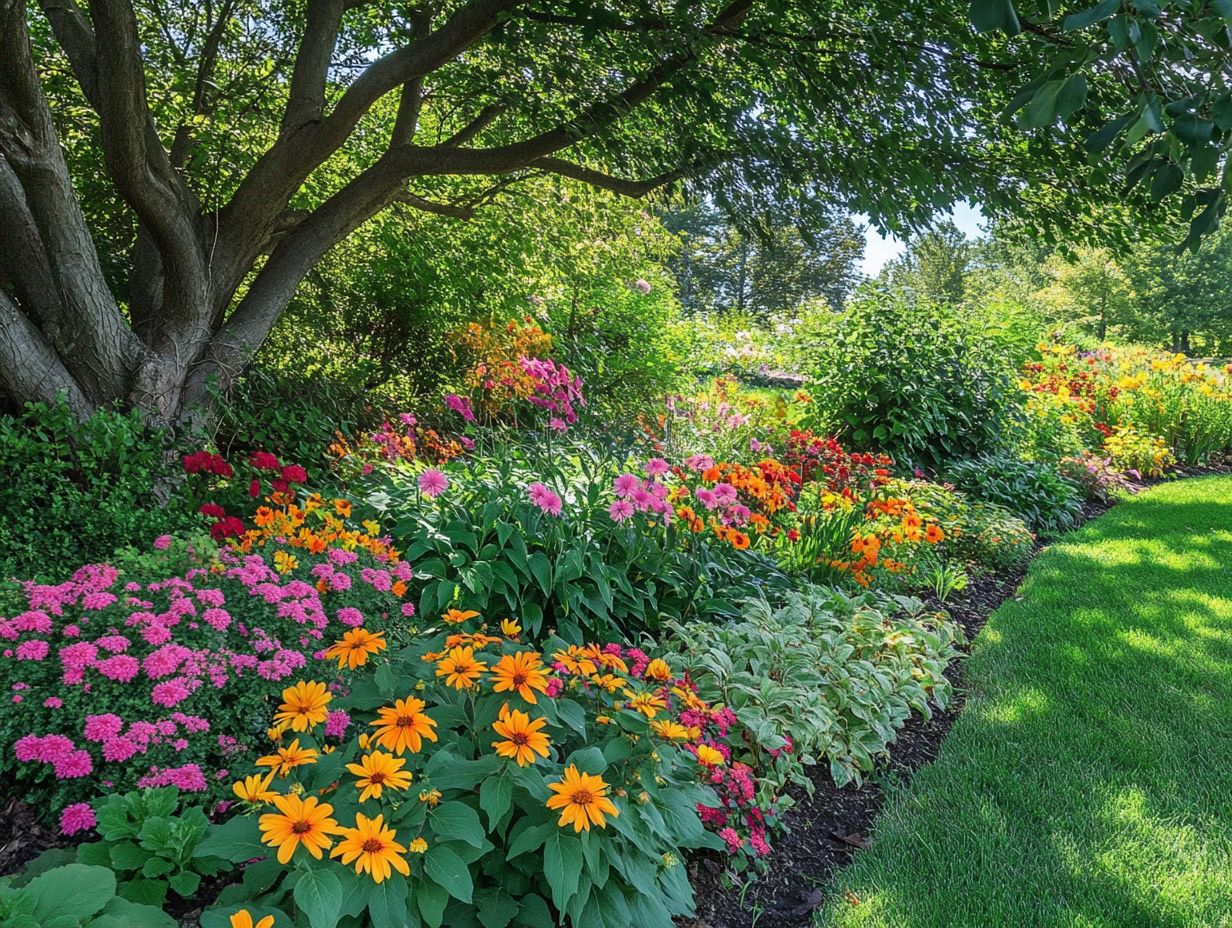
Topography and elevation shape microclimates. Variations in landforms can create cold air pockets or urban heat islands, impacting local temperatures.
This variability affects precipitation patterns and alters the moisture available in the soil. In areas with rolling hills, the windward slopes receive more rain, while the leeward sides are drier.
In these environments, drought-tolerant plants like lavender thrive by adapting to lower moisture levels. As a garden enthusiast, you can design landscapes with these resilient plants for sustainable outdoor spaces.
Impact of Microclimates on Plant Growth
Microclimates play a crucial role in plant growth. They shape the types of vegetation that flourish and the overall health and productivity of your plants.
Localized climate variations dictate soil preferences, moisture availability, and temperature levels. These elements are essential for plant survival and optimal growth.
Understanding how plants respond to these conditions can elevate your garden management and landscape design.
How Different Plants Respond to Microclimates
Plants adapt their growth strategies based on soil moisture, temperature fluctuations, and sun exposure. Understanding these variations is crucial for selecting the right species.
For example, shade-loving plants thrive under taller trees, relying on filtered sunlight and moist, organic-rich soils. In contrast, drought-tolerant species excel in arid areas with deep root systems.
By recognizing these preferences, you can make informed decisions in plant selection. This leads to healthier gardens and a more sustainable landscape design.
Choosing Plants for Specific Microclimates
Selecting the right plants for specific microclimates is key to gardening success. Understanding microclimates in your cold garden ensures that each plant enjoys the optimal conditions for vigorous growth.
Consider factors like soil preferences, moisture, and sunlight exposure to select suitable plant varieties. This approach boosts plant survival and enhances the beauty and functionality of your landscape.
Best Plant Selection for Different Conditions

Selecting the best plants for conditions like full sun or partial shade is essential for a vibrant garden. Understanding specific plant characteristics can dramatically improve your gardening success.
For instance, sun-loving species like lavender thrive in full sun with well-drained soils. In contrast, ferns flourish in shaded areas with moist, rich soil.
Being aware of moisture preferences helps guide your selections. By observing light exposure and soil moisture, you can nurture a diverse landscape that meets each plant’s needs for optimal growth.
Creating and Manipulating Microclimates
Creating and manipulating microclimates can profoundly elevate the growing environment for your plants. This smart approach will make your plants thrive! By understanding the factors that influence local climate conditions like providing shelter from wind and strategically placing shade trees you can skillfully adjust your garden to meet the specific needs of different plant species.
This proactive strategy not only enhances plant health but also enriches the overall beauty of your landscape.
Methods for Changing Local Climates in Your Garden for Optimal Plant Growth
There are several effective methods for changing local climates to promote optimal plant growth and enhance your landscape gardening endeavors.
One key technique is to create windbreaks with strategically placed plants. This shields your delicate flora from harsh winds and helps maintain higher humidity levels essential for their growth.
Installing shade trees reduces ground temperatures and helps retain moisture, creating a cooler environment that proves particularly beneficial during the hotter months. Modifying soil conditions by adding organic matter will improve water retention and nutrient availability, ultimately supporting overall plant health.
Together, these methods not only boost the resilience of your garden but also foster a more productive growing environment in diverse climatic conditions.
Frequently Asked Questions
What is a microclimate?

A microclimate is a small-scale area with distinct climatic conditions that differ from the surrounding area. It can be affected by factors such as topography, exposure to sunlight, and proximity to water sources.
How do microclimates affect plant growth?
Microclimates can significantly impact plant growth, as different plants have varying temperature, moisture, and sunlight requirements. Understanding microclimates can help you choose the right plants for your specific location.
What are some common types of microclimates?
Examples include urban heat islands, mountain valleys, and coastal regions. These areas can have unique characteristics that influence the growth of plants.
How can I identify microclimates in my garden?
You can identify microclimates in your garden by observing patterns of temperature, humidity, and sunlight. Certain areas may be warmer or cooler, sunnier or shadier, or have higher or lower moisture levels compared to the rest of your garden.
What factors should I consider when selecting plants for microclimates?
When choosing plants for microclimates, consider their tolerance for temperature, moisture, and sunlight. Additionally, understanding plant selection for cold-climate design will help you take into account the specific conditions in your microclimate, such as wind exposure and soil type.
Can I create my own microclimate?
Yes! You can create your own microclimate by using techniques such as mulching, wind barriers, and shade structures. These methods can help you control temperature, moisture, and sunlight levels in a specific area of your garden to create ideal conditions for certain plants.
What steps will you take today to create the perfect microclimate in your garden?

